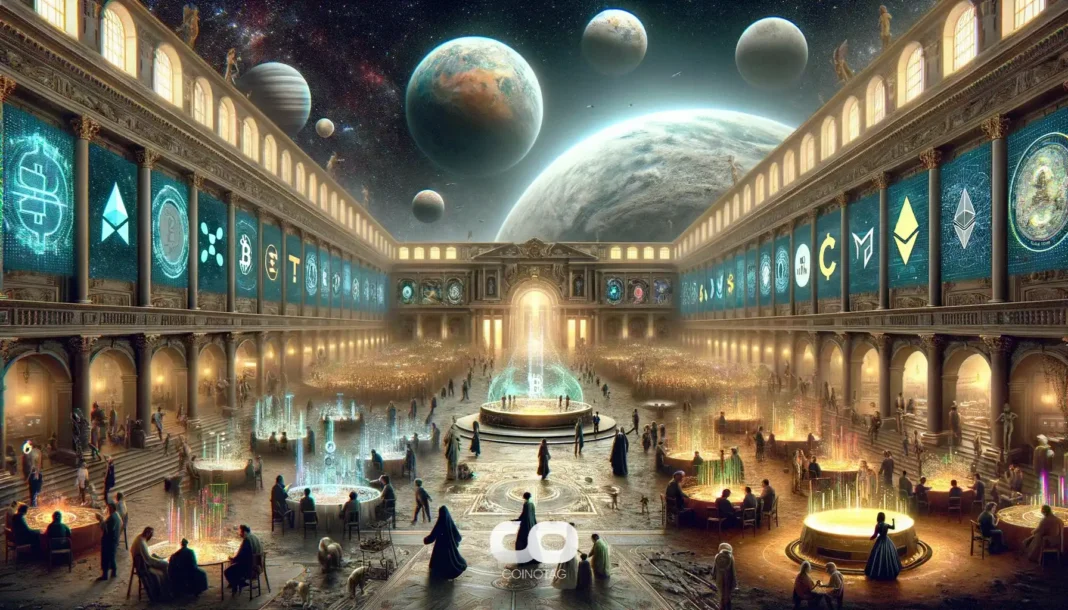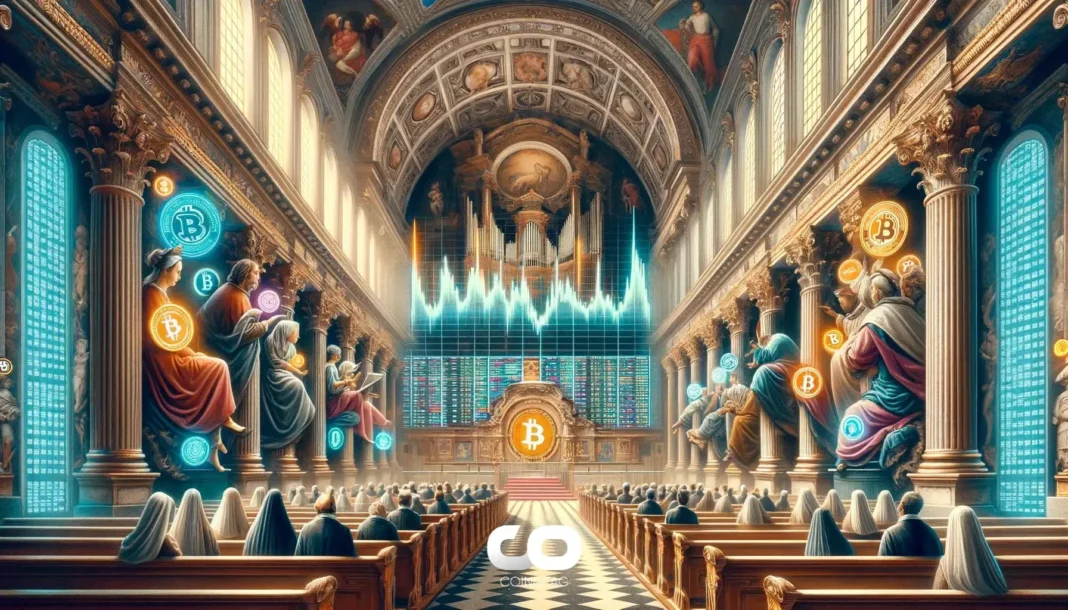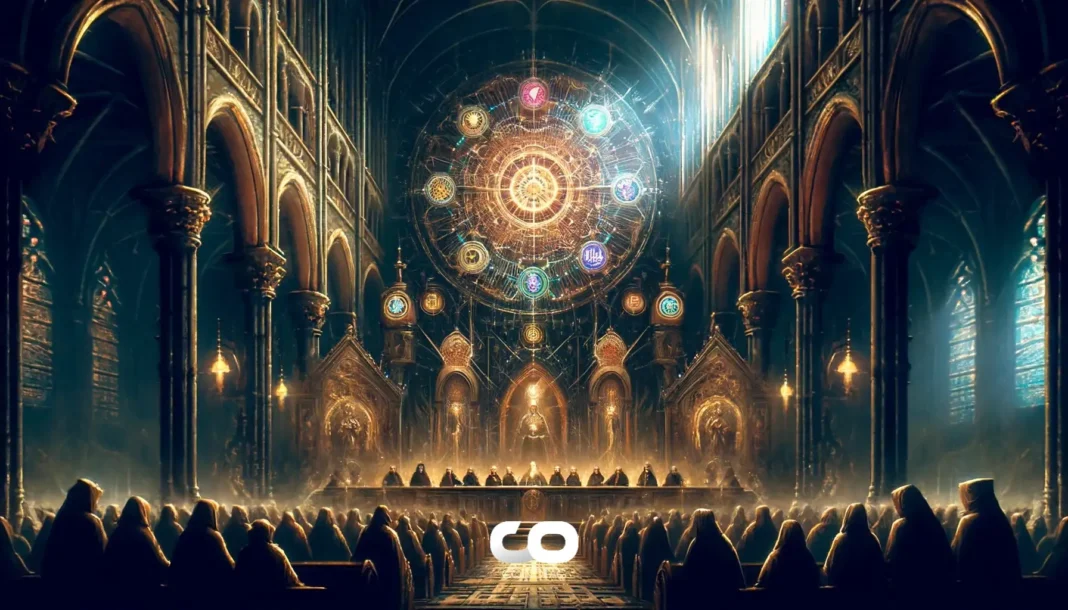| COINOTAG recommends • Exchange signup |
| 💹 Trade with pro tools |
| Fast execution, robust charts, clean risk controls. |
| 👉 Open account → |
| COINOTAG recommends • Exchange signup |
| 🚀 Smooth orders, clear control |
| Advanced order types and market depth in one view. |
| 👉 Create account → |
| COINOTAG recommends • Exchange signup |
| 📈 Clarity in volatile markets |
| Plan entries & exits, manage positions with discipline. |
| 👉 Sign up → |
| COINOTAG recommends • Exchange signup |
| ⚡ Speed, depth, reliability |
| Execute confidently when timing matters. |
| 👉 Open account → |
| COINOTAG recommends • Exchange signup |
| 🧭 A focused workflow for traders |
| Alerts, watchlists, and a repeatable process. |
| 👉 Get started → |
| COINOTAG recommends • Exchange signup |
| ✅ Data‑driven decisions |
| Focus on process—not noise. |
| 👉 Sign up → |
-
The recent surge in Polygon-based NFT sales underscores a transformative moment in the digital collectible market, propelled by the innovative RWA NFT marketplace, Courtyard.
-
This significant uptick not only highlights the evolving landscape of NFTs but also showcases the increasing interest in tokenized real-world assets among collectors and investors alike.
-
According to a report from CryptoSlam, the impressive sales performance of Courtyard’s NFT collection, which reached a remarkable $20.7 million, played a pivotal role in this surge.
Explore how the Polygon NFT ecosystem is thriving with the rise of Courtyard, a transformative RWA marketplace leading to record sales and growing interest in digital collectibles.
RWA NFT Collection Drives Polygon Surge
The recent surge in Polygon’s NFT sales can be traced back to a single collection that emphasizes the impact of real-world asset (RWA) tokenization in the NFT space. This development indicates a broader trend where traditional collectible markets are merging with blockchain technology.
RWA tokenization involves converting physical assets—like real estate, art, or trading cards—into digital tokens, facilitating easier access and enhanced trading opportunities. This innovative approach allows assets to be securely bought, held, or traded on a blockchain, democratizing ownership and investment.
Recent data from CryptoSlam reveals that the explosive demand for Courtyard NFTs directly contributed to a 20% increase in Polygon’s NFT sales over the past week. The collection’s staggering sales volume of $20.7 million outperformed many established NFT projects, underlining the potential of RWAs in reshaping digital asset markets.
| COINOTAG recommends • Professional traders group |
| 💎 Join a professional trading community |
| Work with senior traders, research‑backed setups, and risk‑first frameworks. |
| 👉 Join the group → |
| COINOTAG recommends • Professional traders group |
| 📊 Transparent performance, real process |
| Spot strategies with documented months of triple‑digit runs during strong trends; futures plans use defined R:R and sizing. |
| 👉 Get access → |
| COINOTAG recommends • Professional traders group |
| 🧭 Research → Plan → Execute |
| Daily levels, watchlists, and post‑trade reviews to build consistency. |
| 👉 Join now → |
| COINOTAG recommends • Professional traders group |
| 🛡️ Risk comes first |
| Sizing methods, invalidation rules, and R‑multiples baked into every plan. |
| 👉 Start today → |
| COINOTAG recommends • Professional traders group |
| 🧠 Learn the “why” behind each trade |
| Live breakdowns, playbooks, and framework‑first education. |
| 👉 Join the group → |
| COINOTAG recommends • Professional traders group |
| 🚀 Insider • APEX • INNER CIRCLE |
| Choose the depth you need—tools, coaching, and member rooms. |
| 👉 Explore tiers → |
The Unique Market Place of Courtyard
Courtyard functions as a pioneer in the RWA NFT marketplace, specializing in graded physical card collections that resonate strongly with collectors. This includes famous trading cards from franchises like Pokémon, basketball, and baseball, tapping into existing demand while introducing a blockchain-based trading avenue.
The marketplace offers a unique selling proposition: maintaining physical assets within a secure vault managed by a professional security company. Such arrangements bolster trust, confirming that each NFT represents an actual card that users can redeem, should they choose. Upon redemption, the corresponding NFT is permanently burned, thereby removing it from circulation and enhancing the scarcity of remaining tokens.
| COINOTAG recommends • Exchange signup |
| 📈 Clear interface, precise orders |
| Sharp entries & exits with actionable alerts. |
| 👉 Create free account → |
| COINOTAG recommends • Exchange signup |
| 🧠 Smarter tools. Better decisions. |
| Depth analytics and risk features in one view. |
| 👉 Sign up → |
| COINOTAG recommends • Exchange signup |
| 🎯 Take control of entries & exits |
| Set alerts, define stops, execute consistently. |
| 👉 Open account → |
| COINOTAG recommends • Exchange signup |
| 🛠️ From idea to execution |
| Turn setups into plans with practical order types. |
| 👉 Join now → |
| COINOTAG recommends • Exchange signup |
| 📋 Trade your plan |
| Watchlists and routing that support focus. |
| 👉 Get started → |
| COINOTAG recommends • Exchange signup |
| 📊 Precision without the noise |
| Data‑first workflows for active traders. |
| 👉 Sign up → |
RWA assets have gained notable traction in early 2025, as data from RWA.xyz indicates a noteworthy growth in the sector, with tokenized assets valued at approximately $21.2 billion and over 97,000 total asset holders. This growth trend is further amplified by the rising interest in stablecoins, which already represent a value of $227 billion, highlighting the potential economic impact of RWAs and NFTs.
Broader Implications of RWA Tokenization
The concept of RWA tokenization extends beyond merely enhancing asset liquidity; it signifies a shift in how traditional assets can engage with a digital-first world. As more institutions and investors gravitate towards tokenized assets, the potential for disrupting traditional markets becomes apparent.
| COINOTAG recommends • Traders club |
| ⚡ Futures with discipline |
| Defined R:R, pre‑set invalidation, execution checklists. |
| 👉 Join the club → |
| COINOTAG recommends • Traders club |
| 🎯 Spot strategies that compound |
| Momentum & accumulation frameworks managed with clear risk. |
| 👉 Get access → |
| COINOTAG recommends • Traders club |
| 🏛️ APEX tier for serious traders |
| Deep dives, analyst Q&A, and accountability sprints. |
| 👉 Explore APEX → |
| COINOTAG recommends • Traders club |
| 📈 Real‑time market structure |
| Key levels, liquidity zones, and actionable context. |
| 👉 Join now → |
| COINOTAG recommends • Traders club |
| 🔔 Smart alerts, not noise |
| Context‑rich notifications tied to plans and risk—never hype. |
| 👉 Get access → |
| COINOTAG recommends • Traders club |
| 🤝 Peer review & coaching |
| Hands‑on feedback that sharpens execution and risk control. |
| 👉 Join the club → |
Collectible markets, in particular, stand to benefit greatly from this shift, allowing collectors to independently verify ownership and provenance through blockchain technology. In this evolving landscape, platforms like Courtyard serve as a catalyst for mainstream adoption of RWA trading models while driving consumer engagement.
Analyzing the Future of NFT Markets
As Polygon continues to lead the charge in NFT sales driven by RWAs, it positions itself uniquely within the rapidly evolving cryptocurrency landscape. The implications for both collectors and investors are profound, suggesting that the nexus between traditional collectibles and blockchain utility will continue to flourish.
Engaging with NFTs, particularly those grounded in real-world assets, provides an avenue that not only diversifies investment portfolios but also introduces new forms of asset ownership. The focus on tangible assets may drive more users towards platforms that support RWA tokenization, signifying inevitable growth within this sub-sector of the broader NFT market.
Conclusion
The surge of Polygon NFTs driven by the Courtyard platform reflects not just a momentary spike, but a significant evolution in the NFT landscape. As interest in RWA tokenization continues to expand, collectors and investors alike stand to benefit from the accessibility and liquidity introduced through these innovative marketplaces. The future of digital collectibles is promising, with increasing integration of real-world assets paving the way for a new era of investment possibilities.
| COINOTAG recommends • Exchange signup |
| 📈 Clear control for futures |
| Sizing, stops, and scenario planning tools. |
| 👉 Open futures account → |
| COINOTAG recommends • Exchange signup |
| 🧩 Structure your futures trades |
| Define entries & exits with advanced orders. |
| 👉 Sign up → |
| COINOTAG recommends • Exchange signup |
| 🛡️ Control volatility |
| Automate alerts and manage positions with discipline. |
| 👉 Get started → |
| COINOTAG recommends • Exchange signup |
| ⚙️ Execution you can rely on |
| Fast routing and meaningful depth insights. |
| 👉 Create account → |
| COINOTAG recommends • Exchange signup |
| 📒 Plan. Execute. Review. |
| Frameworks for consistent decision‑making. |
| 👉 Join now → |
| COINOTAG recommends • Exchange signup |
| 🧩 Choose clarity over complexity |
| Actionable, pro‑grade tools—no fluff. |
| 👉 Open account → |
| COINOTAG recommends • Members‑only research |
| 📌 Curated setups, clearly explained |
| Entry, invalidation, targets, and R:R defined before execution. |
| 👉 Get access → |
| COINOTAG recommends • Members‑only research |
| 🧠 Data‑led decision making |
| Technical + flow + context synthesized into actionable plans. |
| 👉 Join now → |
| COINOTAG recommends • Members‑only research |
| 🧱 Consistency over hype |
| Repeatable rules, realistic expectations, and a calmer mindset. |
| 👉 Get access → |
| COINOTAG recommends • Members‑only research |
| 🕒 Patience is an edge |
| Wait for confirmation and manage risk with checklists. |
| 👉 Join now → |
| COINOTAG recommends • Members‑only research |
| 💼 Professional mentorship |
| Guidance from seasoned traders and structured feedback loops. |
| 👉 Get access → |
| COINOTAG recommends • Members‑only research |
| 🧮 Track • Review • Improve |
| Documented PnL tracking and post‑mortems to accelerate learning. |
| 👉 Join now → |







